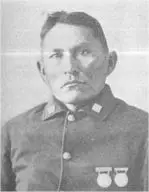Cojoya Tribe
Cojoya Indians. An unidentified people, described by Fray Geronimo de Zarate-Salmeron, about 1629 , as living in a fertile and well watered country “80 leagues before reaching New Mexico from the west side, separated by 2 days of travel from the Rio del Norte (Rio Grande) and the King’s highway.” They raised cotton, corn, and other vegetables, and wove very fine, thin mantas. Their neighbors to the east were the Gorretas (Mansos), and on the south were their enemies, the Conchas, or Conchos, who lived about the junction of the Rio Conchas and the Rio Grande, in Chihuahua, Mexico. Zarate-Salmeron … Read more

